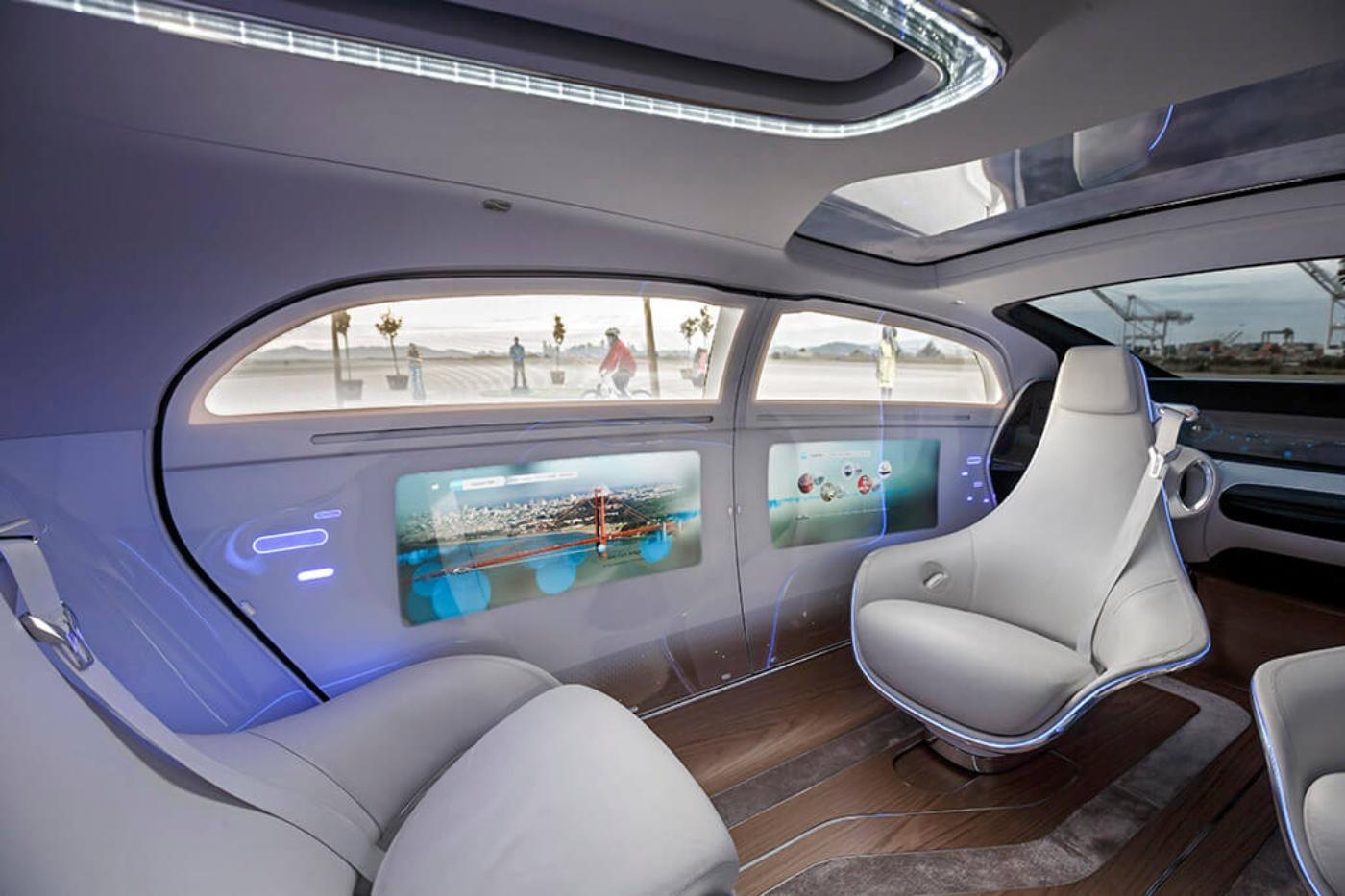
News
Travelling in the autonomous car: where time ticks differently
In the self-driving car, we will no longer need to concentrate on the traffic around us in future. The car drives itself – and we finally have time for the things that are important to us. New technologies turn our vehicle into a different place at various times of the day: the office, a cinema, a relax lounge.
The trip to visit grandma takes an hour. The car glides through the streets, almost noiselessly. Inside, there is loud laughter. A table, on it a board game such as "Sorry", with four seats around it for the parents and their two children. Their son has just bumped his mother back to the start – again! The pieces get moved. No-one is looking at the road. Stopping at the traffic lights, allowing pedestrians to cross at the zebra crossing – the car handles all that.
As yet, the fully autonomous driving car (also known as Level 5) is still a future dream. Major automotive manufacturers (OEMs), start-ups and automotive suppliers have already been researching the self-driving car for over ten years now. With the new developments in e-mobility, one aspect of the car is gaining in importance which was not initially the focus at all: the interior.
Even today, the electric drive no longer needs as much space as the technology involved in a combustion engine. In future, it might also be possible to dispense with dashboards and the brake, clutch and accelerator pedals. The steering wheel can be retracted into the cockpit, or may similarly not be needed. 3D control features will only be visible when they are needed.
The space gained is now available for the car's occupants – turning the car interior into the "third space" for passengers, and a playground for designer fantasies. Flexibly configurable design elements are replacing the current fixed structures, such as seats. The space adapts to the passengers.

Quantity time, quality time, downtime
Time is the most valuable thing we have. We can't turn back time, we can't prolong it, but we can enjoy the moment and make the best of it. That's precisely what the self-driving car of the future can give us: time. For work. For leisure. For the family. For our friends. For ourselves. Where parks or cafés used to be the third space, in future it will be the car. And the possibilities are simply unlimited.
Do you want to get down to work on the way into the office or when travelling on business? No problem. The seating is flexible, and can even be configured with the back facing the front windscreen. A table folds out from the driver's door. Thanks to OLED technology, windows become digital touchscreens. Meetings are therefore every bit as possible as downloading e-mails and editing important files or presentations.
The 25th hour of the day
On average, we spend an hour per day in the car, Audi has established. In a 2017 study entitled "25th hour" ("25. Stunde") in collaboration with the Fraunhofer Institute IAO, the car manufacturer examined how an intelligent and intuitive interior helps people to concentrate – and that way becomes the perfect mobile workspace, for instance. Windows which can be darkened, calming music and a lighting concept designed to promote concentration can create a working environment which even goes beyond what you might find in an office. And all in your own car, totally matched to individual preferences and habits, with no interruptions or irritations from outside or from colleagues.

Different every time
However, car drivers want flexibility. The interior should be capable of accommodating a variety of different uses. While the car was a substitute office in the morning, once work is over it becomes a place of rest and relaxation. This is "down-time", when the seat becomes a recliner (perhaps even for two), and the car fills zonally with music and scents, or is gently lit with dimmed light. The expanse of the roof becomes a broadband screen. Augmented Reality or Mixed-Reality glasses (HoloLens) reveal new worlds. Snoozing, reading, getting a back massage – everything's possible. And no need to press buttons, as everything is controlled via a voice assistant. Taking comfort to the next level, sensors monitor body temperature and adjust the ambient temperature zonally for each occupant individually. The car is fully connected: a bouquet of flowers for mum? Quickly booking the restaurant for that evening? No problem, using Cloud services you can deal with all this, even while you are on the move.
Fish, fairies or pirates
Adaptability is not only a desirable quality in private cars. It is truly needed in car-sharing fleets, with their many different users and their different wishes. On top of this, the car needs to satisfy high hygiene standards – an aspect that the coronavirus pandemic, above all, has impressed upon us all. In the shared car, surfaces need to be washable, robust and hardwearing. In addition, they should be antibacterial and multi-resistant.
One thing is clear: if this is how the cars of the future look, then travelling will be anything but tedious. Moaning children during long-distance trips will be a thing of the past too. If they get bored, we can simply change the windows into an aquarium or a pirate ship, or send virtual fairies and dragons gliding past the car.
(Stagephoto © Rinspeed)